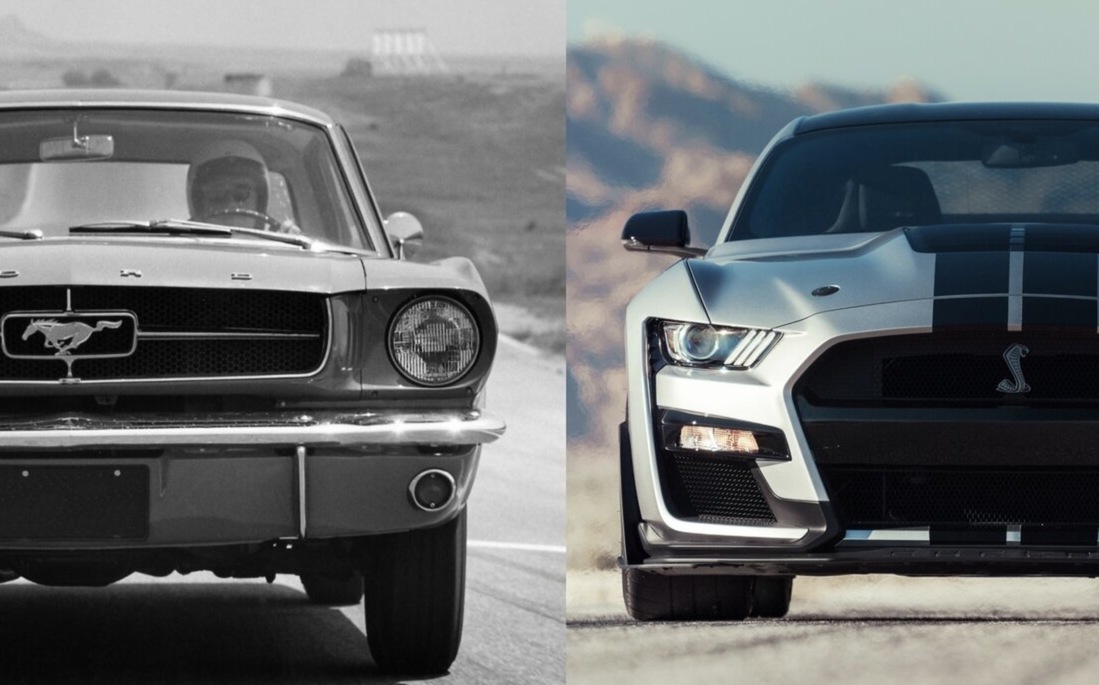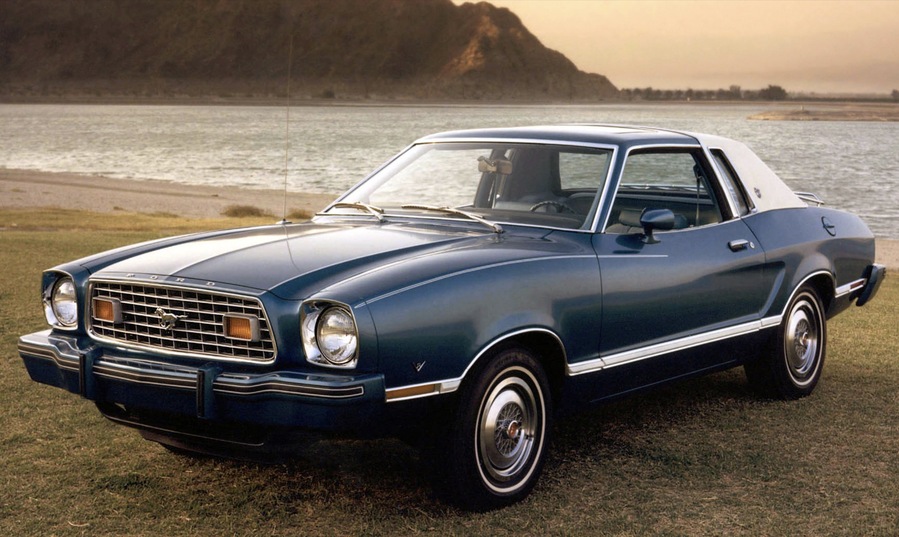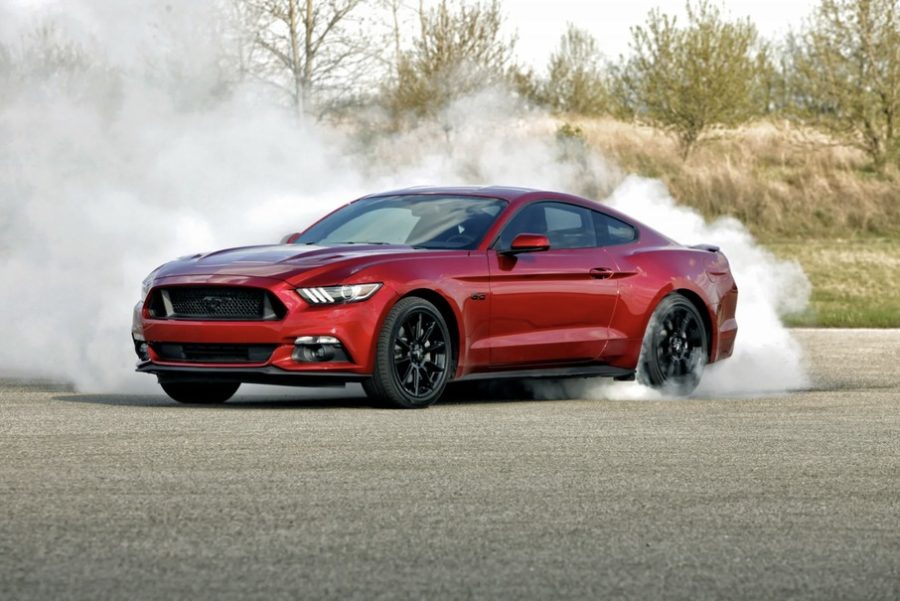
The Evolution of the Ford Mustang: A Detailed Look at Each Generation
The Ford Mustang, an emblem of American automotive excellence, has captivated car enthusiasts for over half a century. Since its inception in 1964, the Mustang has undergone significant transformations across six generations, each introducing groundbreaking innovations, design refinements, and performance enhancements. This detailed article delves into the evolution of the Ford Mustang, exploring the key changes and milestones of each generation. Experience driving a Mustang firsthand with Dream Car Rental, offering an unparalleled opportunity to enjoy this iconic car.
First Generation (1964-1973)
Key Changes and Design:
– 1964.5: The inaugural Mustang was introduced with a distinctive long hood and short rear deck, establishing its iconic silhouette. Available as a coupe and convertible, it featured a range of engines, including a 170 cubic inch six-cylinder and a 289 cubic inch V8. The Mustang quickly became a cultural phenomenon, appealing to a broad audience with its sporty design and affordable price.
– 1965-1966: The GT option package was introduced, adding features such as disc brakes, grille-mounted fog lamps, and sporty stripes. The high-performance Shelby GT350, with its racing pedigree, also made its debut, emphasizing the Mustang’s versatility as both a daily driver and a track-ready machine.
– 1967-1968: A significant redesign made the Mustang slightly larger to accommodate a big-block V8 engine. The 1968 model introduced the legendary Cobra Jet engine, enhancing its performance credentials. The exterior received subtle updates, including new grille designs and taillights.
– 1969-1970: This period saw the introduction of high-performance variants like the Mach 1, Boss 302, and Boss 429. These models featured more aggressive styling, with quad headlights and a more muscular stance. The focus was on power and performance, catering to the growing muscle car market.
– 1971-1973: The Mustang grew even larger and heavier, reflecting the industry’s trend towards more luxurious and comfortable vehicles. While the Boss 351 and 429 engines were discontinued, the Mustang retained its sporty character with a variety of V8 engine options.

Second Generation (1974-1978)
Key Changes and Design:
– The second generation, known as the Mustang II, emerged during the oil crisis, prioritizing fuel efficiency and compact dimensions.
– 1974: The Mustang II featured a shorter, narrower body, offered with a 2.3-liter four-cylinder and a 2.8-liter V6 engine. The V8 option was temporarily discontinued. The design drew inspiration from European sports cars, emphasizing agility and economy.
– 1976: Responding to customer demand, Ford reintroduced the V8 engine option. The Cobra II appearance package, with its racing stripes and hood scoops, aimed to recapture the Mustang’s performance heritage.
Third Generation (1979-1993)
Key Changes and Design:
– The third generation, known as the Fox Body Mustang, was built on the Fox platform, featuring a more aerodynamic and modern design.
– 1982: The GT model returned, equipped with a high-output 5.0-liter V8 engine, marking the Mustang’s return to its performance roots. The exterior design was sleek and functional, with a focus on reducing drag.
– 1987: A significant facelift introduced new aero headlights, a smoother front end, and updated interior features, enhancing both aesthetics and functionality.
– 1993: The Cobra model was reintroduced with a 235-horsepower 5.0-liter V8 engine, offering improved performance and handling. This marked the end of the Fox Body era, setting the stage for a new generation of Mustangs.
Fourth Generation (1994-2004)
Key Changes and Design:
– The fourth generation featured a complete redesign on the SN-95 platform, incorporating a more rounded and modern appearance.
– 1994: The new Mustang offered a 3.8-liter V6 and a 5.0-liter V8 engine. The GT model included performance-oriented features such as enhanced suspension and brakes.
– 1996: The introduction of the modular 4.6-liter V8 engine brought new technology and improved performance, replacing the older 5.0-liter V8.
– 1999: A major facelift, known as the “New Edge” design, brought sharper lines and a more aggressive look, with updates to both the exterior and interior.
Fifth Generation (2005-2014)
Key Changes and Design:
– The fifth generation Mustang returned to its retro roots, drawing inspiration from the original 1960s models, built on the D2C platform.
– 2005: The Mustang featured a 4.0-liter V6 and a 4.6-liter V8 engine, offering improved performance and modern amenities. The design paid homage to classic Mustangs with its iconic front grille and fastback roofline.
– 2011: The introduction of the 3.7-liter V6 and the 5.0-liter V8 engines brought significant power and efficiency improvements, solidifying the Mustang’s reputation for performance.
– 2013: A facelift included updated front and rear fascias, HID headlights, and new technology features, enhancing both style and functionality.

Sixth Generation (2015-Present)
Key Changes and Design:
– The sixth generation Mustang featured a global design, intended for sale in markets worldwide, built on the S550 platform.
– 2015: The new Mustang included independent rear suspension for improved handling, a turbocharged 2.3-liter EcoBoost engine, and the traditional 5.0-liter V8, offering a balance of performance and efficiency.
– 2018: A facelift brought a more aggressive front end, new LED headlights, and an updated interior with a digital dashboard, keeping the Mustang at the forefront of automotive technology.
– 2020: The Mustang Mach-E, an all-electric SUV, was introduced, marking a significant shift towards electric mobility while maintaining the Mustang’s performance heritage. The Mach-E offers a range of electric powertrains and advanced technology features, appealing to a new generation of Mustang enthusiasts.
Awards and Recognition
The Ford Mustang has garnered numerous awards throughout its history, reflecting its enduring popularity and performance excellence. Among its accolades are the 1974 and 1994 Motor Trend Car of the Year awards, and the 2021 North American SUV of the Year award for the Mustang Mach-E. The Mustang has also secured the title of the best-selling sports car in the world in 2019 and maintained this status for five consecutive years, a testament to its global appeal and iconic status.
Experience the Thrill with Dream Car Rental
Dream Car Rental, a leading car rental company in Perth, Australia, offers the opportunity to experience the Ford Mustang GT Convertible. Starting at $320 per day, you can feel the thrill of driving this iconic sports car on the open road. The Mustang GT Convertible combines classic design with modern performance, featuring a powerful V8 engine, sleek styling, and advanced technology. Whether it’s the roar of the engine, the wind in your hair with the top down, or the Mustang’s responsive handling, Dream Car Rental ensures an unforgettable driving experience.
Conclusion
The Ford Mustang stands as a testament to American automotive ingenuity and cultural impact. From its humble beginnings as a solution to the Edsel failure to its current status as an international icon, the Mustang has continually evolved while staying true to its performance roots. Each generation has brought its unique flair and advancements, ensuring the Mustang remains a beloved and influential part of automotive history. As the Mustang continues to evolve, it remains a symbol of freedom, power, and innovation on the open road.

Biker, vegan, music blogger, Bauhaus fan and Guest speaker. Performing at the crossroads of minimalism and programing to create great work for living breathing human beings. Nothing ventured, nothing gained.